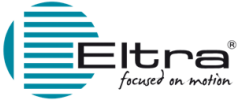What is the Profinet protocol?
The ever-shorter innovation cycles for new products makes the continuous evolution of automation technology necessary. The use of fieldbus technology has been a significant development in the past few years. It has made possible to migrate from centralized automation systems to decentralized ones. PROFIBUS, as the global market leader, has set the benchmark here for 25 years. In today’s automation technology, Ethernet and information technology (IT) are increasingly calling the shots with established standards like TCP/IP and XML.
Integrating information technology into automation opens up significantly better communication options among automation systems, extensive configuration and diagnostic possibilities, and network-wide service functionality.
These functions have been integral components of PROFINET from the outset. PROFINET is the innovative open standard for Industrial Ethernet.
PROFINET satisfies all requirements of automation technology; whether the application involves production automation, process automation, or drives (with or without functional safety), PROFINET is the first choice across the board. As a technology that is standard in the automotive industry, widely disseminated in machine building, and well-proven in the food and packaging and logistics industries, PROFINET has found its way into all application areas.
New application areas are constantly emerging, such as marine and rail applications or even day-to-day operations, for example, in a beverage shop. And now: the new PROFIenergy technology profile will improve the energy balance in production processes. PROFINET is standardized in IEC 61158 and IEC 61784.
The ongoing further development of PROFINET offers users a long-term view for the implementation of their automation tasks.
For plant and machine manufacturers, the use of PROFINET minimizes the costs for installation, engineering, and commissioning.
For plant owners, PROFINET offers ease of plant expansion and high plant availability due to autonomously running plant units and low maintenance requirements. The mandatory certification for PROFINET devices also ensures a high quality standard.

Example of plant network
The scope of functions supported by PROFINET IO is clearly divided into conformance classes ("CC"). These provide a practical summary of the various minimum properties.
There are three conformance classes that build upon one another and are oriented to typical applications.

Profinet conformance classes
CC-A provides basic functions for PROFINET IO with RT communication. All IT services can be used without restriction. Typical applications are found, for example, in business automation. Wireless communication is specified for this class.
CC-B extends the concept to include network diagnostics via IT mechanisms as well as topology information. The system redundancy function important for process automation is contained in an extended version of CC-B named CC-B(PA).
CC-C describes the basic functions for devices with hardware-supported bandwidth reservation and synchronization (IRT communication) and is thus the basis for isochronous applications.
The conformance classes also serve as the basis for the certification and the cabling guidelines.
A detailed description of the CCs can be found in the document “The PROFINET IO Conformance Classes” [7.042].
The PROFINET concept was defined in close collaboration with end users based on standard Ethernet according to IEEE 802 in IEC 61158 and IEC 61784. Figure below lists additional specifications of the functionalities in the form of different joint profiles. These form the basis for device or application-specific profiles. Instructions are created for the necessary planning, engineering, and commissioning steps.
The basics for this form the guidelines for engineering PROFINET systems.

PROFINET IO follows the Provider/Consumer model for data exchange.
Configuring a PROFINET IO system has the same look and feel as in PROFIBUS.
The following device classes are defined for PROFINET IO:

IO Controller: this is typically the programmable logic controller (PLC) on which the automation program runs. This is comparable to a class 1 master in
PROFIBUS. The IO controller provides output data to the configured IO devices in its role as provider and is the consumer of input data of IO devices.
IO Device: an IO device is a distributed I/O field device that is connected to one or more IO controllers via PROFINET IO. It is comparable to the function of a slave in PROFIBUS. The IO device is the provider of input data and the consumer of output data.
IO Supervisor: this can be a Programming Device (PD), personal computer (PC), or human machine interface (HMI) device for commissioning or diagnostic purposes and corresponds to a class 2 master in PROFIBUS.
A plant unit contains at least one IO controller and one or more IO devices. IO supervisors are usually integrated only temporarily for commissioning or troubleshooting purposes.
Further infomations can be found on the Profinet website.
| Profinet Encoder Eltra |
 En
En It
It